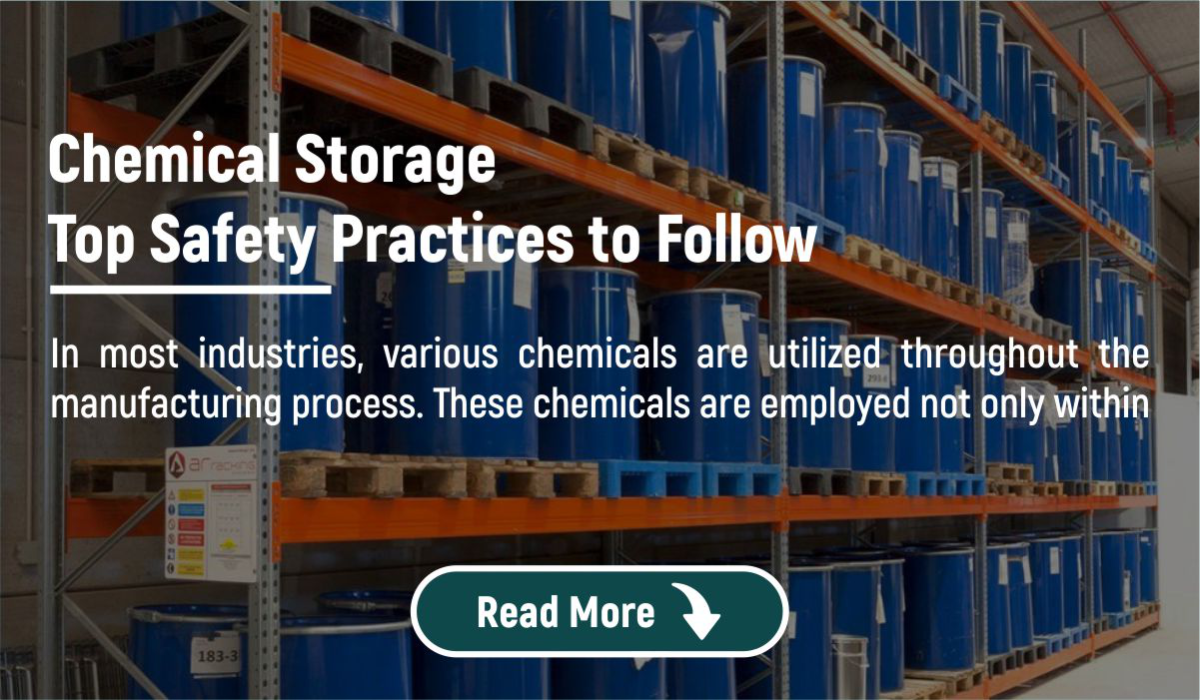
Chemical Storage – Top Safety Practices to Follow
In most industries, various chemicals are utilized throughout the manufacturing process. These chemicals are employed not only within production but also in quality control laboratories, where production-related samples are evaluated, as well as in process development and research and development laboratories.
Given the diverse nature of these chemicals and their unique chemical and physical properties, it is imperative to handle and store them appropriately. Implementing stringent safety precautions and adhering to precise procedures are essential to prevent mishaps. This approach ensures a safe and efficient workplace while protecting personnel from potential harm.
When storing chemicals at the workplace, several key considerations must be observed. Firstly, it is crucial to ensure that chemicals are stored in a secure location, away from unauthorized access and accidental spillage, which can lead to severe consequences. Clear and accurate labeling of chemicals is essential to facilitate their correct usage.
Storage areas must be clearly defined, and different chemicals should be stored in separate sections for ease of identification. Certain materials and substances should be stored separately or in purpose-built secure storage facilities, such as gas-bottle cages. These areas should be maintained in a clean and orderly manner and regularly inspected. Where necessary, such as in areas housing flammable products, appropriate warning signs should be displayed. Work activities should not be conducted within storage spaces.
Considerations for Chemical Storage
Maintaining a safe and orderly work environment requires proper chemical storage. The following general guidelines should be adhered to:
1. Compatibility: Ensure goods are stored properly to avoid compatibility issues and potential chemical interactions. Hazardous items should be stored separately, following safety regulations.
2. Proper Labeling: All chemicals should be appropriately labeled to indicate their contents. Labels should include the name of the substance, associated dangers, and handling guidelines. This facilitates proper identification and handling by employees.
3. Segregation: Safely store chemicals to avoid cross-contamination or the mixing of incompatible substances. Use safety data sheets (SDS) or other relevant information to determine compatibility and segregation.
4. Ventilation: Consider the ventilation requirements of specific chemicals, particularly those that emit fumes or gases or have specific temperature needs. Ensure adequate ventilation to prevent the accumulation of hazardous substances or the creation of an unfavorable environment.
5. Fire Safety: Adhere to fire safety precautions when storing chemicals. Maintain clear pathways for emergency exits and comply with all relevant fire protection standards and guidelines, such as keeping combustible materials away from ignition sources.
6. Training & Information: Ensure employees are trained in proper chemical handling and aware of potential hazards. Consult safety data sheets (SDS) or other critical documents to inform staff about the characteristics and handling requirements of stored chemicals.
7. Audits & Reviews: Regularly review chemical storage practices to ensure compliance with regulations, identify areas for improvement, and implement necessary updates. Conduct periodic audits to verify proper chemical handling, labeling, and storage.
It is important to note that specific chemical storage requirements may vary based on industry, location, and the types of chemicals stored. Always refer to relevant safety laws, codes, and standards applicable to your industry and working conditions to ensure compliance and safety.
